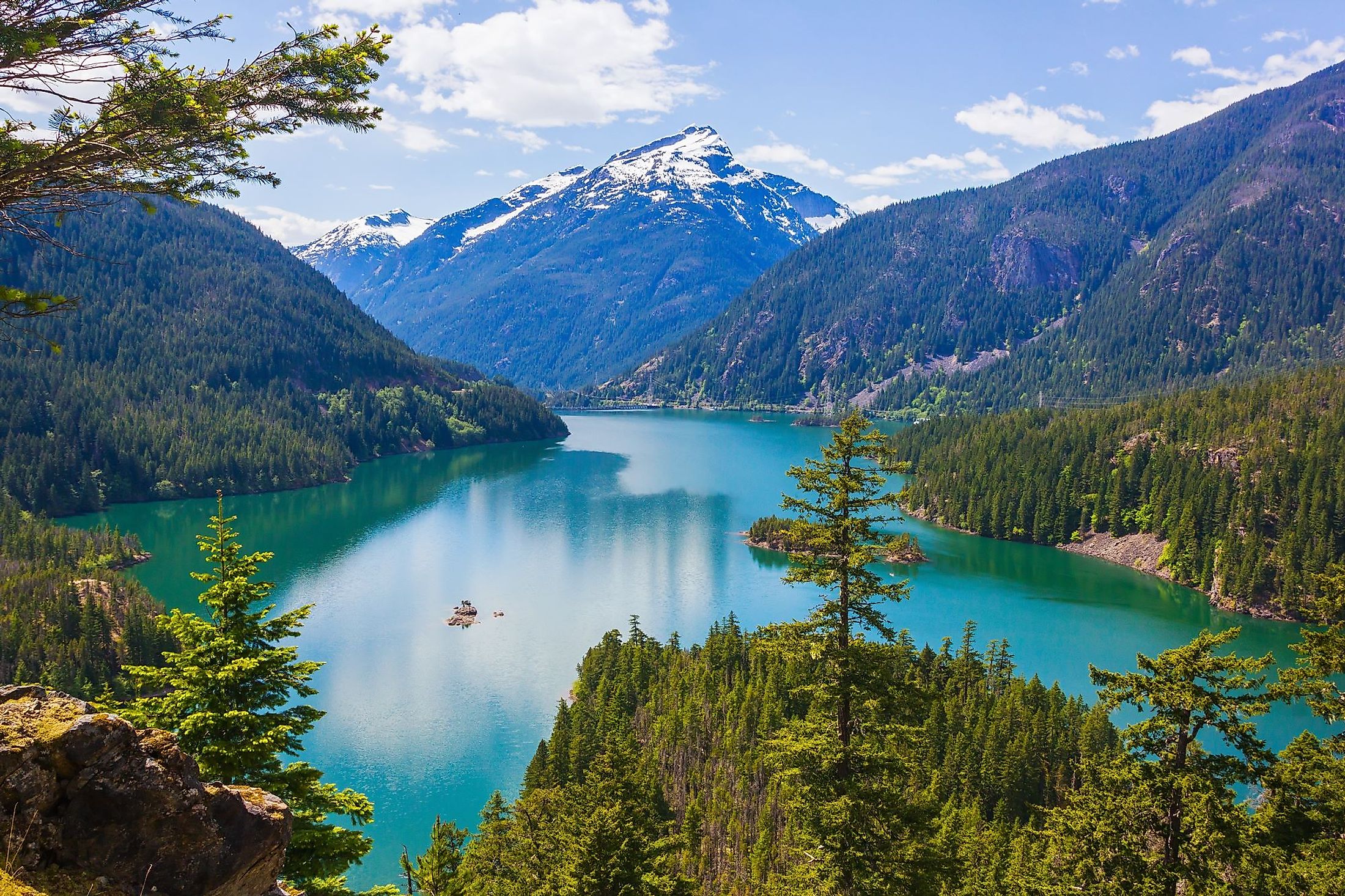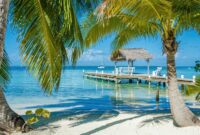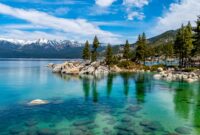Great Places to Vacation in the US offers a diverse range of experiences, from the majestic heights of national parks to the sun-kissed shores of iconic beaches. This exploration delves into the best the United States has to offer, encompassing thrilling adventure activities, vibrant city breaks, and uniquely captivating destinations that cater to every travel style and preference. Whether you seek tranquility amidst nature’s grandeur or the pulse of bustling urban life, this guide unveils hidden gems and celebrated landmarks, ensuring an unforgettable American vacation.
From the awe-inspiring vistas of Yosemite National Park to the vibrant cultural tapestry of New Orleans, the United States boasts a remarkable diversity of vacation destinations. This guide will help you navigate this vast landscape, offering insights into the best national parks, beach escapes, city breaks, and adventure travel opportunities. We’ll also explore some lesser-known, uniquely American experiences that will leave you with lasting memories.
National Parks
The United States boasts a breathtaking array of National Parks, each offering a unique and unforgettable experience for visitors. These protected areas preserve stunning landscapes, diverse ecosystems, and significant historical and cultural sites, providing opportunities for recreation, education, and contemplation. Exploring these parks is a journey into the heart of America’s natural beauty and heritage.
Top Five Most Visited US National Parks
The popularity of these parks reflects their accessibility, diverse attractions, and stunning natural features. Millions of visitors annually experience the wonders these locations offer.
Here are five of the most visited:
- Great Smoky Mountains National Park (North Carolina and Tennessee): Known for its diverse plant and animal life, including abundant wildflowers and black bears. Visitors enjoy hiking trails ranging in difficulty, scenic drives along winding mountain roads, and historical settlements within the park.
- Grand Canyon National Park (Arizona): Famous for its immense, colorful canyon carved by the Colorado River. Activities include hiking along the rim or descending into the canyon (requiring significant planning and physical fitness), mule rides, and ranger-led programs.
- Yellowstone National Park (Wyoming, Montana, and Idaho): A geothermal wonderland with geysers like Old Faithful, hot springs, and mud pots. Wildlife viewing opportunities are abundant, with bison, elk, and wolves frequently sighted. Visitors can explore via scenic drives, hiking trails, and boat tours.
- Zion National Park (Utah): Characterized by its towering sandstone cliffs, narrow canyons, and the Virgin River flowing through it. Hiking is a popular activity, ranging from easy riverside strolls to challenging climbs. The iconic Angels Landing trail offers breathtaking views (permit required).
- Rocky Mountain National Park (Colorado): Features high-elevation alpine tundra, forests, and abundant wildlife. Visitors enjoy scenic drives along Trail Ridge Road, which offers panoramic views, as well as numerous hiking trails catering to various skill levels. Opportunities for wildlife viewing, including elk and bighorn sheep, are prevalent.
Comparison of Mountain and Coastal National Parks
Yosemite National Park (a mountain park) and Acadia National Park (a coastal park) provide vastly different, yet equally rewarding, experiences.
Yosemite, nestled in the Sierra Nevada mountains, offers dramatic granite cliffs, giant sequoia trees, and cascading waterfalls. Activities center around hiking, rock climbing, and enjoying the awe-inspiring views. The experience is often characterized by a sense of grandeur and scale.
Acadia, located on Mount Desert Island in Maine, provides a rugged coastal landscape with granite peaks, rocky shores, and diverse marine life. Activities include hiking, kayaking, exploring tide pools, and enjoying stunning ocean views. The experience is more intimate, with a blend of land and sea.
Comparison of Three National Parks
The following table compares three diverse national parks, highlighting their location, accessibility, and typical activities.
| National Park | Location | Accessibility | Typical Activities |
|---|---|---|---|
| Yellowstone National Park | Wyoming, Montana, Idaho | Relatively accessible, with paved roads and visitor centers. Some areas require more strenuous hiking. | Geyser viewing, wildlife watching, hiking, scenic drives, boating. |
| Acadia National Park | Mount Desert Island, Maine | Good accessibility, with paved roads and well-maintained trails. Some areas may be challenging for those with mobility issues. | Hiking, kayaking, tide pooling, scenic drives, biking, wildlife viewing. |
| Grand Canyon National Park | Arizona | Accessible via car, but many activities require significant physical exertion (hiking into the canyon). Rim trails are more accessible. | Hiking (various difficulty levels), mule rides, scenic views, ranger programs. |
Beach Destinations
The United States boasts a stunning array of coastline, offering diverse beach vacation experiences catering to a wide range of preferences. From family-friendly shores to romantic getaways and adventurous surf breaks, the possibilities are endless. Choosing the perfect beach destination depends largely on your desired vacation style and the type of atmosphere you seek.
Beach Vacation Styles and Locations
The ideal beach vacation is highly subjective, influenced by individual preferences and travel companions. Three distinct styles exemplify the diversity of US beach destinations: family-friendly, romantic getaways, and adventurous surfing trips.
- Family-Friendly Beaches: These locations prioritize safety, amenities, and kid-friendly activities. Examples include Clearwater Beach, Florida, known for its calm waters and shallow shores, and Myrtle Beach, South Carolina, offering numerous attractions and entertainment options for families. Coronado Beach in California also provides a wide, sandy expanse ideal for families.
- Romantic Getaways: For couples seeking intimacy and relaxation, destinations emphasizing seclusion, luxury, and stunning natural beauty are ideal. Consider destinations such as Carmel-by-the-Sea, California, with its charming village atmosphere and picturesque coastline, or Kiawah Island, South Carolina, offering luxurious resorts and pristine beaches. The secluded beaches of Maui, Hawaii, also offer an unparalleled romantic setting.
- Adventurous Surfing Beaches: For surfers of all skill levels, several US beaches provide thrilling waves and a vibrant surf culture. Huntington Beach, California, is renowned as “Surf City USA,” while Waikiki Beach in Hawaii offers iconic waves suitable for beginners and experienced surfers alike. Outer Banks, North Carolina, provides a variety of surf breaks for all levels.
Comparison of Florida, California, and Hawaii Beaches
Florida, California, and Hawaii each offer unique beach experiences, shaped by their distinct climates, activities, and atmospheres.
| Characteristic | Florida | California | Hawaii |
|---|---|---|---|
| Climate | Subtropical; hot and humid summers, mild winters. | Varies significantly by region; Mediterranean climate in Southern California, cooler temperatures in Northern California. | Tropical; warm temperatures year-round, high humidity. |
| Activities | Swimming, sunbathing, watersports (jet skiing, parasailing), fishing, wildlife viewing (manatees, dolphins). | Swimming, sunbathing, surfing, hiking, whale watching (seasonal), exploring coastal towns. | Swimming, sunbathing, surfing, snorkeling, scuba diving, hiking, volcano viewing. |
| Atmosphere | Generally lively and family-oriented, with a range of resorts and attractions. | Ranges from bustling tourist areas to secluded coves; diverse atmosphere reflecting the varied regions. | Relaxed and often luxurious, with a focus on natural beauty and cultural experiences. |
Southern California Beach Vacation Itinerary (7 Days)
This itinerary focuses on exploring the diverse beaches and attractions of Southern California.
- Day 1: Arrive in Los Angeles (LAX), check into your hotel, and spend the afternoon relaxing on Santa Monica Beach.
- Day 2: Explore Venice Beach, known for its eclectic atmosphere, street performers, and Muscle Beach. Enjoy a bike ride along the beach path.
- Day 3: Visit Huntington Beach, “Surf City USA,” and take a surf lesson or simply enjoy the vibrant beach culture.
- Day 4: Drive south to Laguna Beach, known for its stunning coves, tide pools, and art galleries. Consider a boat tour to explore the coastline.
- Day 5: Explore Balboa Island, a charming island community accessible by ferry, and enjoy the views of Newport Beach.
- Day 6: Relax on Coronado Beach, known for its wide sandy expanse and the iconic Hotel del Coronado.
- Day 7: Depart from San Diego (SAN).
City Breaks
City breaks offer a dynamic alternative to traditional vacations, immersing travelers in the unique energy and cultural tapestry of urban centers. From world-renowned museums to vibrant culinary scenes and iconic architecture, a city break promises a concentrated dose of exploration and discovery. This section will highlight some of the best US cities for a memorable urban adventure.
Five Vibrant US Cities
Five US cities stand out for their captivating cultural offerings and diverse attractions: New York City, New Orleans, Chicago, San Francisco, and Austin. New York City, a global icon, boasts world-class museums, Broadway shows, and a diverse culinary landscape. New Orleans, steeped in history and jazz, offers a unique blend of Creole and Cajun culture, with its distinctive architecture and lively music scene. Chicago, a Midwestern metropolis, is renowned for its impressive architecture, blues music, and deep-dish pizza. San Francisco, nestled on the Pacific coast, captivates with its iconic Golden Gate Bridge, vibrant neighborhoods, and innovative tech scene. Finally, Austin, the capital of Texas, pulsates with live music, a thriving food truck culture, and a laid-back atmosphere.
A Comparison of Urban Experiences: New York City, New Orleans, and Chicago
New York City, New Orleans, and Chicago present distinctly different urban experiences. New York City’s architectural landscape is a mix of historical brownstones, towering skyscrapers, and modern architectural marvels. Its culinary scene is incredibly diverse, encompassing global cuisines and high-end dining experiences. New Orleans, in contrast, features a unique architectural style influenced by French, Spanish, and Creole traditions. Its culinary scene is centered around Creole and Cajun cuisine, with a strong emphasis on seafood and spices. Chicago’s architecture is characterized by its impressive skyscrapers, particularly those in the Art Deco and Prairie School styles. Its culinary scene is renowned for its deep-dish pizza and diverse ethnic eateries.
Three-Day Sightseeing Itinerary: New York City
A three-day itinerary for New York City should incorporate iconic landmarks and diverse experiences. Efficient transportation is key, utilizing the subway system for ease of travel.
- Day 1: Midtown Marvels: Visit Times Square, explore the Rockefeller Center, and ascend the Top of the Rock for panoramic city views. Use the subway to navigate between locations. Enjoy a Broadway show in the evening.
- Day 2: Downtown Delights: Explore the Financial District, visit the 9/11 Memorial & Museum, and take the Staten Island Ferry for a free view of the Statue of Liberty. Use the subway for efficient travel. Enjoy dinner in Little Italy or Chinatown.
- Day 3: Museum Hop & Central Park Stroll: Choose from world-renowned museums like the Metropolitan Museum of Art or the Museum of Modern Art. Spend the afternoon relaxing in Central Park, perhaps renting a bike or taking a horse-drawn carriage ride. Utilize the subway or taxis for transportation depending on location.
Adventure Travel
The United States offers a diverse landscape perfect for thrill-seekers and outdoor enthusiasts. From challenging climbs to exhilarating water sports, the options for adventure travel are virtually limitless. This section will explore three distinct adventure activities, compare the challenges of two popular backpacking trails, and outline the planning process for a multi-day hiking trip.
Three Distinct Adventure Activities in the US
The US provides a wealth of opportunities for adventure travel, catering to a wide range of experience levels and preferences. Three particularly popular and diverse activities showcase this breadth: white-water rafting, rock climbing, and backcountry skiing.
White-water rafting offers an adrenaline-pumping experience navigating powerful river currents. Rivers like the Colorado River in the Grand Canyon or the Ocoee River in Tennessee provide exhilarating rapids suitable for various skill levels, from gentle floats to intense class V whitewater. Experienced guides lead the rafts, ensuring safety while providing an unforgettable journey through stunning natural scenery. The challenge lies in navigating the unpredictable currents and rapids, requiring teamwork and physical fitness. The reward is the breathtaking beauty of the river canyons and the thrill of conquering challenging rapids.
Rock climbing, ranging from bouldering to multi-pitch ascents, allows adventurers to test their physical and mental strength against imposing rock faces. Locations like Yosemite National Park in California or Moab, Utah offer world-class climbing opportunities, attracting climbers of all abilities. The challenges include mastering climbing techniques, managing fear of heights, and understanding route finding. The rewards are the sense of accomplishment after conquering a difficult climb, the stunning views from the summit, and the personal growth achieved through pushing physical and mental limits.
Backcountry skiing provides a unique blend of skiing and wilderness exploration. Resorts like Alta Ski Area in Utah or Jackson Hole in Wyoming offer extensive backcountry access, allowing skiers to explore untouched powder and challenging terrain. The challenges involve navigating challenging terrain, understanding avalanche safety, and possessing the skills to self-rescue. The reward is the unparalleled experience of skiing pristine powder snow in a remote, pristine environment, a truly unique and rewarding experience.
Comparing Backpacking the Appalachian Trail and Exploring the Grand Canyon
Backpacking the Appalachian Trail (AT) and exploring the Grand Canyon represent two very different, yet equally challenging, adventure travel experiences.
The Appalachian Trail, spanning over 2,190 miles from Georgia to Maine, presents a challenge of endurance and logistical planning. The terrain is varied, including mountains, forests, and streams. Hikers face challenges such as long daily distances, varied weather conditions, and the need for careful resupply planning. The rewards include a profound connection with nature, a sense of accomplishment from completing a significant undertaking, and the opportunity to experience the diverse ecosystems of the Appalachian Mountains.
Exploring the Grand Canyon, whether by hiking rim-to-rim or undertaking shorter hikes, presents a different set of challenges. The immense scale of the canyon, combined with the steep elevation changes, requires excellent physical fitness and careful planning. The heat, arid conditions, and potential for altitude sickness add further complexity. The rewards, however, are equally compelling: the breathtaking vistas, the unique geological formations, and the sense of awe inspired by the sheer scale and grandeur of the canyon.
Planning a Multi-Day Hiking Trip in Yosemite National Park
Yosemite National Park, renowned for its granite cliffs, giant sequoia trees, and stunning waterfalls, provides an ideal location for a multi-day hiking trip. Careful planning is crucial for a safe and enjoyable experience.
Prior to the trip, detailed research is necessary. This includes selecting a suitable trail based on experience level and fitness, obtaining necessary permits (if required), checking weather forecasts, and informing someone of the itinerary.
Gear recommendations include a lightweight backpack, sturdy hiking boots, layers of clothing suitable for varied weather conditions, a first-aid kit, plenty of water and high-energy snacks, a map and compass or GPS device, and a headlamp or flashlight.
Safety precautions are paramount. These include carrying sufficient water and food, understanding trail conditions and potential hazards, being aware of wildlife, practicing Leave No Trace principles, and having a plan for emergencies, including carrying a satellite communicator or personal locator beacon in remote areas. Always check trail conditions and weather reports before embarking on your hike and be prepared to adjust your plans as needed.
Ending Remarks
Ultimately, the perfect US vacation depends entirely on your personal preferences. Whether you crave the thrill of conquering a mountain peak, the relaxation of a sun-drenched beach, or the cultural immersion of a vibrant city, the United States offers something for everyone. This guide has provided a starting point for your planning, showcasing the incredible diversity and unparalleled beauty found across the nation. We encourage you to delve deeper into the options presented, research further, and craft a memorable American adventure that perfectly suits your needs and desires. Happy travels!




